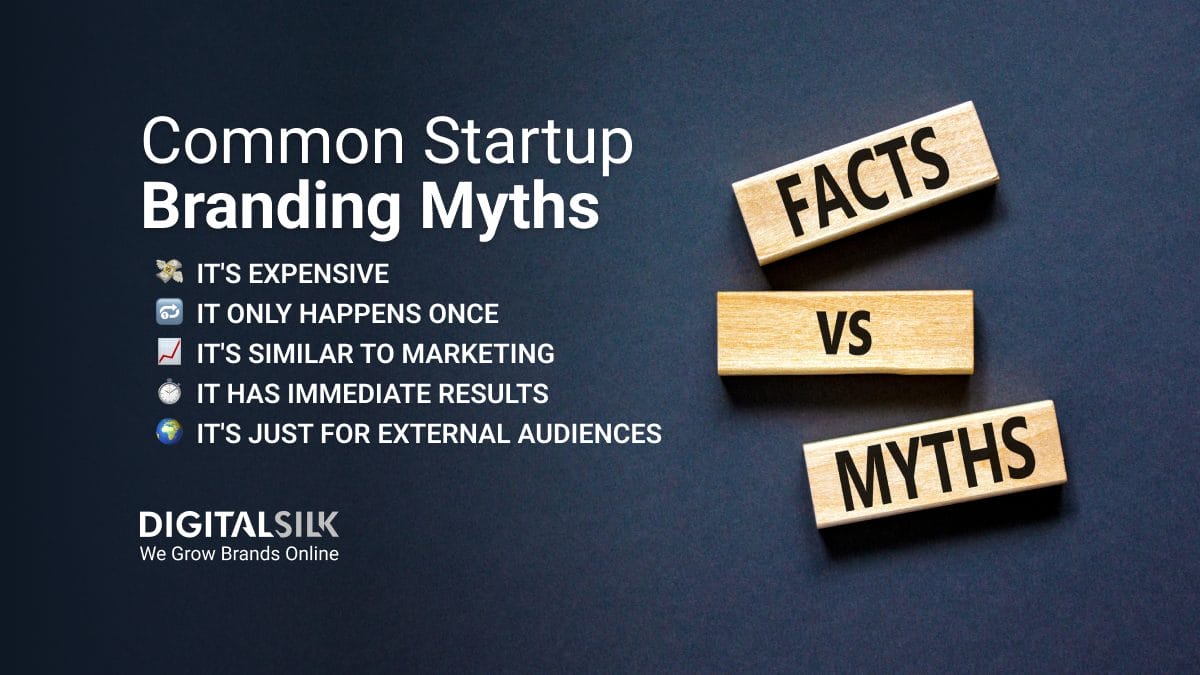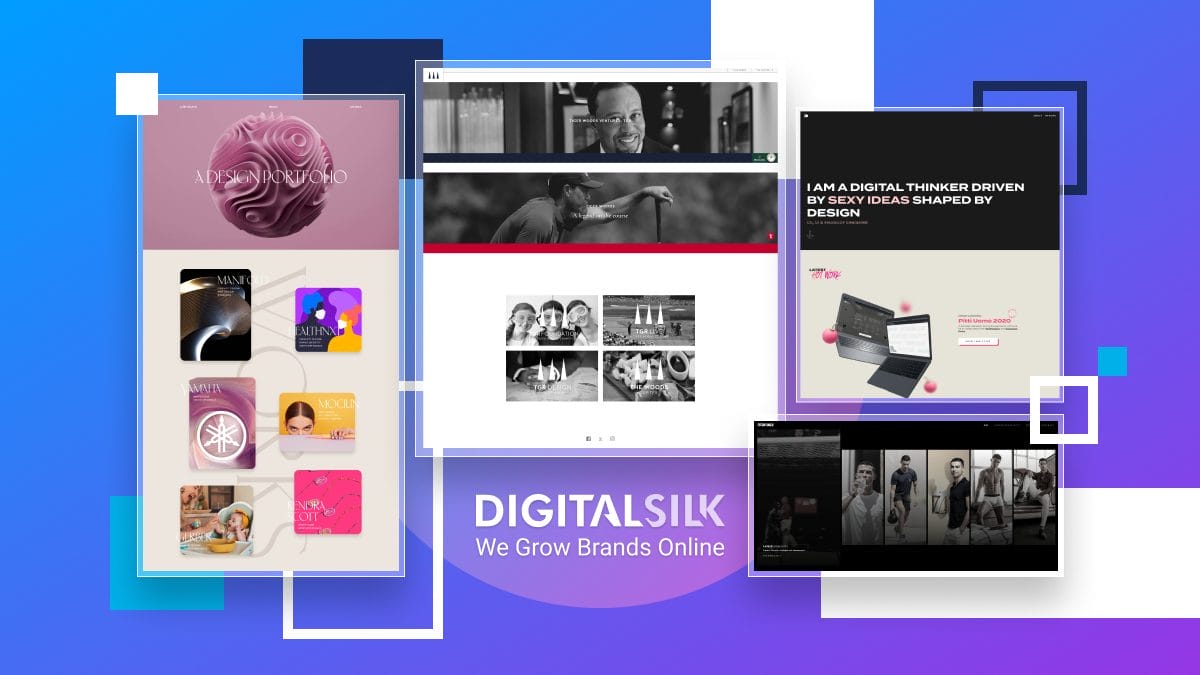The real estate market is projected to hit a staggering $654.40 trillion in 2025.
As this booming sector continues to grow, so does the fierce competition among realtors to attract clients or list specific properties.
Outperforming your competitors ultimately boils down to the image and reputation you establish for your business because it speaks volumes about your core identity and values to your target audience.
In this post, we’ll explore 20 effective real estate agent branding ideas to inspire and guide your strategy in creating a distinctive and memorable industry presence.
20 Best Real Estate Agent Branding Ideas For More Clients
Your brand strategy is the direct impression you leave on potential clients and the foundation for future relationships. It enables you to adapt to changing market trends, consistently deliver on your promises and ultimately boost your revenue.
To help you establish a strong market presence and attract more clients, we created a list of the best real estate agent branding ideas you can use to succeed.
The ideas you’ll discover below showcase the importance of identifying your target market, clearly communicating your brand’s unique values and engaging with potential clients at every step of their customer journey.
1. Identify Your Niche
Identifying and specializing in a niche market allows you to become a recognized authority in a specific area, such as luxury homes, commercial properties or eco-friendly living spaces.
This focus enhances your brand’s appeal to a specific industry segment and helps differentiate you from other agents in the market.
It allows you to target your chosen field effectively through tailored and more efficient marketing efforts.
Defining your niche involves doing industry research to determine gaps and opportunities within the real estate market.
This can be anything from understanding the needs and preferences of potential clients to identifying unserved geographic areas.
You can later use this information to customize your brand image, messaging, website and marketing materials to connect with your target audience.
2. Define Your Core Values
Your core values reflect what your brand stands for and promises to its clients.
In real estate, values like integrity, transparency and commitment to customer satisfaction can enhance trust and loyalty among your target demographic.
When your brand truly embodies its authentic values, it demonstrates a genuine commitment to your clients’ needs that goes beyond a simple transaction.
It’s not just about what you say, but also about how you make them feel throughout the process.
Your clients expect to see your values in action every step of the way, regardless of whether you’re targeting investors or home buyers.
3. Analyze Your Target Audience
Only 42% of marketers know key target audience characteristics, which often yields ineffective marketing campaigns and revenue losses.
To avoid this, you should assess your ideal clients’ demographics, interests, pain points and behaviors to go beyond superficial information and focus on creating lasting emotional bonds with consumers.
You can do this by creating a signature buyer persona — a Sims-like character that represents your ideal customer — and tailoring all your marketing efforts to match that persona’s preferences.
Think about signature lifestyles, hobbies, interests, values and goals your persona might have — and how those align with your brand mission and messaging — to effectively target your campaigns and attract the right clients.
4. Map Out A Project Timeline
Divide your overall branding strategy into smaller, more manageable chunks. Start by identifying key milestones, such as your core values, building a strong online presence and executing targeted marketing campaigns.
Then, break down each milestone into smaller tasks and assign realistic deadlines to keep yourself accountable.
You could also incorporate seasonal fluctuations or market trends into your plan to maintain a relevant yet flexible strategy.
5. Pick A Memorable Name
Find a name that’s easy to remember, recognize and pronounce.
Keep it short and to–the–point — your brand’s name should align with your brand identity and reflect your niche, services or properties.
Take Millennial’s Choice as an example — the name sums up the brand’s unique value proposition and target audience in just two words:
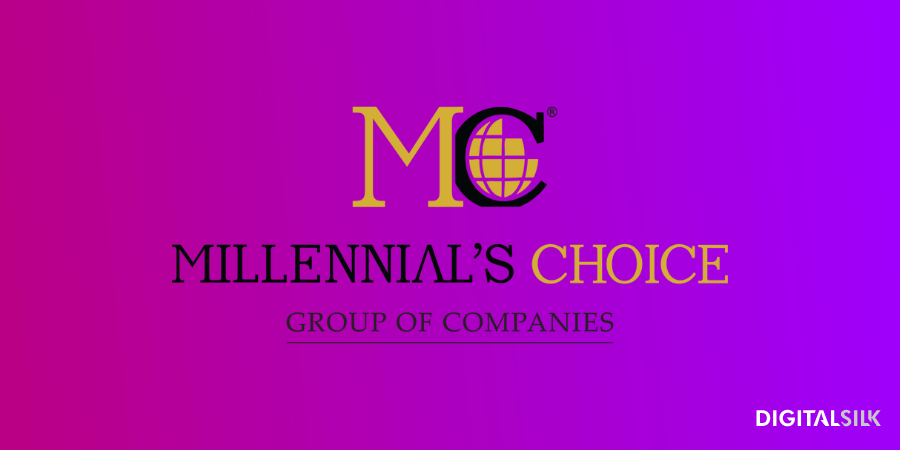
6. Design A Signature Logo
As a key element of your visual brand language, your logo is a strategic asset that cements your market position and boosts credibility and recognition.
Since 86% of consumers appreciate authenticity, you should focus on creating a simple yet memorable design that works well across various mediums, including websites, social media, signs and business cards.
For instance, Gregg Lynn’s logo shows the broker’s initials in a diagonal orientation. With clean and prominent lines, it conveys professionalism and trust:

7. Create A Tagline
As short but impactful branding phrases that accompany your visual identity, taglines quickly communicate your unique selling point and bring your brand promise to life.
Corcoran Group’s displays its “Make yourself at home” tagline prominently on their home page, effectively conveying a homely and welcoming message to potential clients:
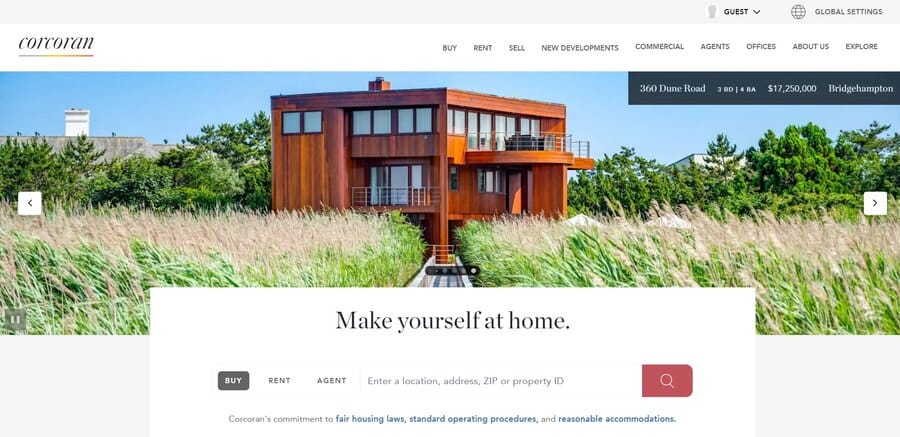
8. Consider Fonts And Typography
Typography is the written medium for your brand — it can reinforce your messaging, evoke the desired emotions and make it easier for audiences to remember you.
The key is balancing stylized designs and easily readable fonts. Think about your goals — are you aiming for a minimalist and put-together approach, or do you want something that reflects your luxury property listings?
Fonts like Proxima Nova or Lato evoke modernity, structure and professionalism while boasting easy readability:

9. Stick To A Trademark Color Palette
Your color scheme can increase brand recognition by a sizable 80%.
As a real estate business, consider developing comprehensive brand guidelines that specify color schemes and imagery to ensure consistency across all brand touchpoints.
When you maintain consistency across all mediums, you increase brand awareness, resonate with clients and strengthen your market presence.
10. Include Appealing Visuals
While you can let your work speak for itself, visually striking imagery can help you capture visitors’ attention and improve brand recognition.
Just take Chris Cortazzo as an example — the dynamic hero section displays breathtaking beachfront properties, sleek animations and impressive photography to entice visitors to explore more:

11. Develop Your Brand Voice
How would you like your target audience to perceive your brand? What words can or can’t be used in your messaging? Do you want to appear helpful and approachable, or authoritative and knowledgeable?
You should consider these aspects when creating your brand voice, so you maintain consistency across all channels and touchpoints.
12. Craft A Compelling Story
Brand storytelling creates meaningful and lasting emotional connections with your target audience.
People aren’t just buying a piece of property — they’re investing in their lifestyle and livelihood to build a future home.
The buying decision balances practical needs like location and budget with the emotional aspects of whether a property truly feels like home or a new dream office.
When you tell a signature story, you help buyers connect to your vision and see themselves in that home or feel the possibilities of their new investments.
Integrating authentic stories into marketing and communication strategies ensures a consistent and engaging experience that effectively communicates your brand’s unique story across all channels.
13. Design A User-Friendly Website
It takes users 0.05 seconds to form an opinion on your website, so you don’t have the luxury of an extra second to impress.
Display your core values clearly and prominently in your hero section, include custom search filters and navigation menus to optimize the user experience and highlight your properties with high-quality images and virtual tours.
The Dawn McKenna Group features a sleek and minimalist user interface, dynamic visuals and a well-defined mission statement on its home page:
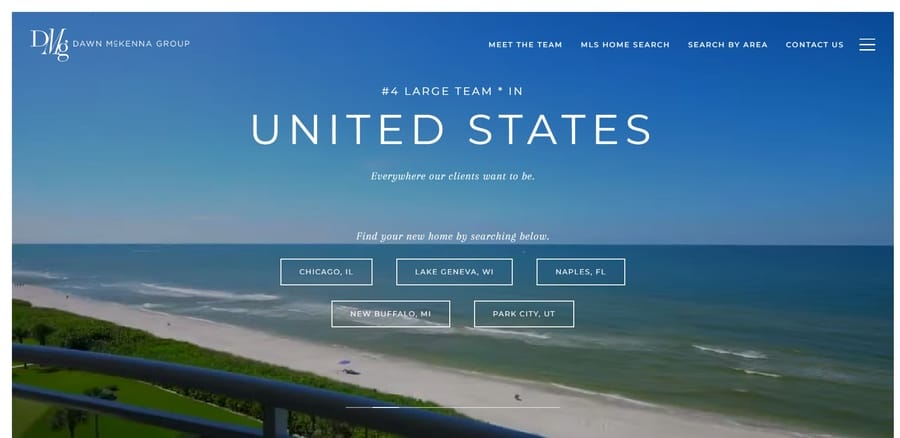
14. Leverage Customer Feedback And Testimonials
Word of mouth is a powerful marketing tool that can help you build trust and credibility in the real estate industry.
These success stories show how you have made a difference in people’s lives – like helping a young couple find their dream home or guiding a family through relocation.
For instance, King and Associates Real Estate has a dedicated testimonials section on their website that encourages new users to leave feedback regarding their services:
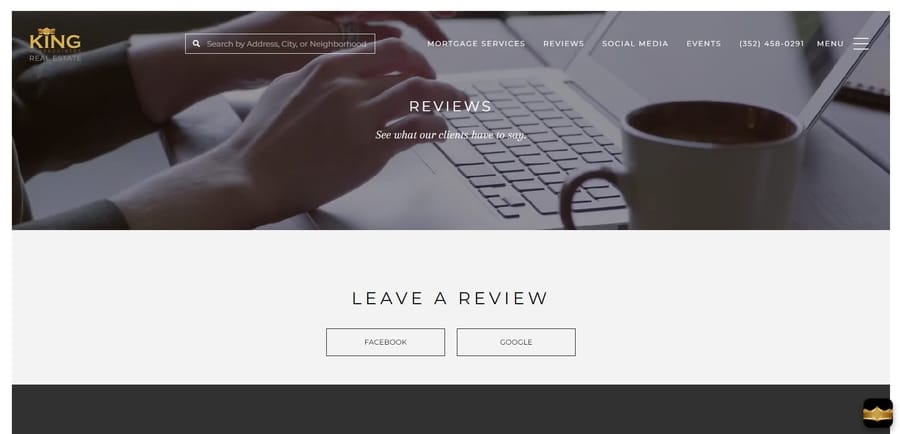
15. Focus On Content Marketing And SEO
Improving search engine visibility in the digital world has become quite the challenge — with 1.1 billion websites across the globe, getting your message across may feel like an uphill battle.
When you optimize your on-page content and use relevant keywords, you increase your chances of ranking higher on search engines like Google or Bing.
You can achieve this by creating valuable and informative blogs, videos or infographics that target your audience’s interests and pain points.
16. Use Paid Ad Campaigns
While organic traffic is the foundation of your online presence, it can take time for your brand to gain traction.
You can use Google or Facebook’s paid ad campaigns for pay-per-click campaigns to speed up the process.
These platforms push your content higher on search results or social media feeds to increase visibility and generate more leads.
17. Curate Your Social Media Presence
Branding for realtors extends beyond your own website — with 47% of leads from social media platforms alone.
You can regularly update your feed with new property listings or share valuable tips and information for home buyers or sellers.
This also helps showcase your personality and community involvement by building trust and rapport with potential clients.
18. Film Video Content
Video content can increase time on site by a significant 88%.
Filming genuine and relatable videos can make your brand feel more real and engaging for consumers.
You can create virtual tours of properties, share client testimonials, or even provide educational videos on the home buying or selling process.
The Boutique Real Estate Group posts property videos that combine highlights of each property with scenes of what it would feel like if users lived there:
19. Rely On Email Marketing Campaigns
While extending your current clientele is an essential aspect of branding for real estate agents, keeping existing users engaged and interested in your services can go a long way in ensuring repeat business and referrals.
One way to keep the conversation going is by sending users automated emails to remind them of upcoming deals, notify them of new listings, or provide valuable tips and insights.
20. Design A Business Card
Business cards are physical representations of your brand — you can easily pass them along while networking or meeting potential clients.
Since there’s usually little space to work with, you should be mindful of the information you choose to display.
Be short and concise — include your name, contact information, logo and a brief description of your services.
5 Best Real Estate Branding Examples
While you may conceptualize your branding strategy in theory with the abovementioned ideas, you may need some real-life examples to guide you in the right direction.
1. Nest Seekers International
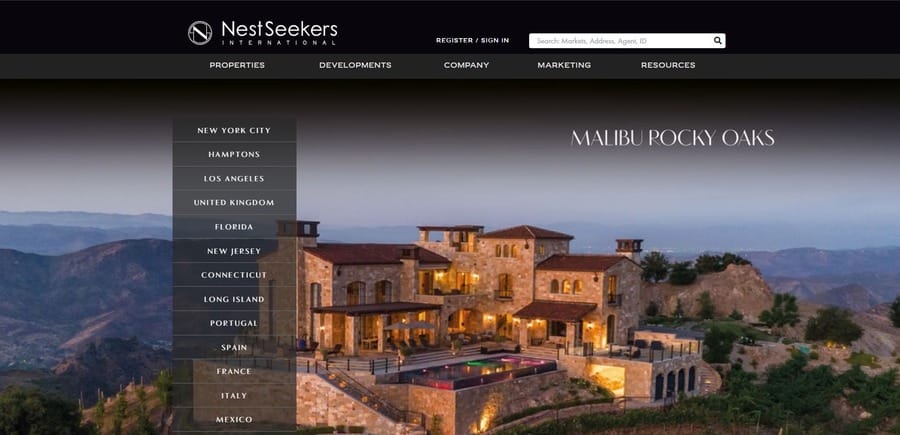
Nest Seekers International redefines luxury real estate listings through ultra-modern website design, minimalist logo and typography and sophisticated and high-end visuals.
The agency’s branding feels like an extension of its services — polished, professional and exclusive.
2. 33 Realty

33 Realty effortlessly combines a streamlined user interface with sophisticated visuals and functionalities.
The brand’s home page boasts a clean and intuitive navigation menu, with signature brand colors and on-page copy to convey its core brand identity and voice.
3. Vesta Preferred Realty
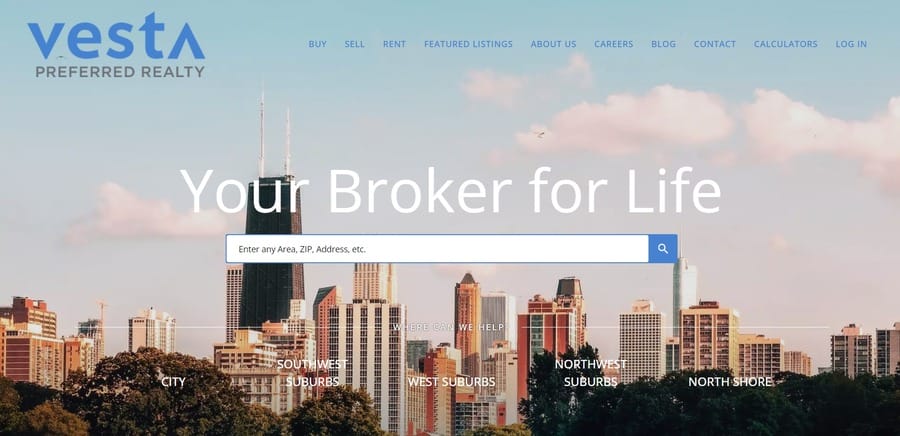
The all-blue brand guidelines are more than evident in Vesta Preferred Realty’s visual identity — with signature accents and bold typography.
The “Your broker for life” tagline reinforces the agency’s dedication to building long-term relationships with clients and points to the emotional connection and memorable experience they strive to provide.
4. Quadwalls
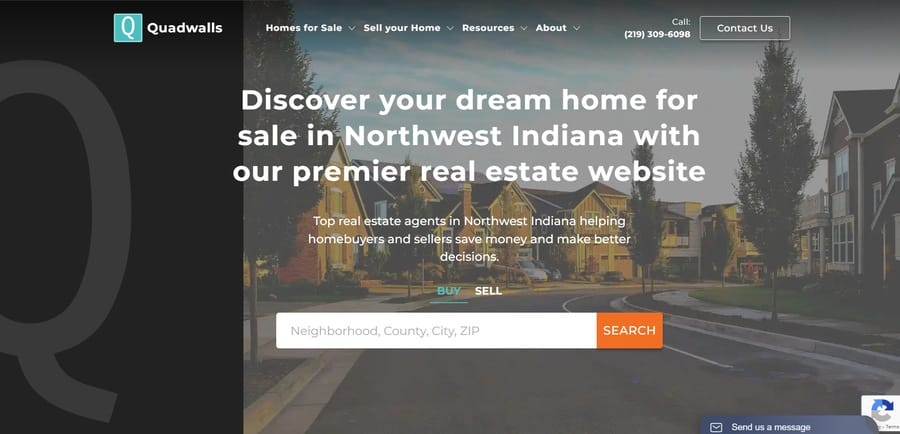
The brand strategy for Quadwalls takes on an interesting play of words for its name — representing the four walls of the properties they sell.
The agency’s minimalist yet impactful style guide features a prominent ‘Q’ on the left side of their home page, alluding to the company’s name and offering a memorable visual identity.
5. Home Finder
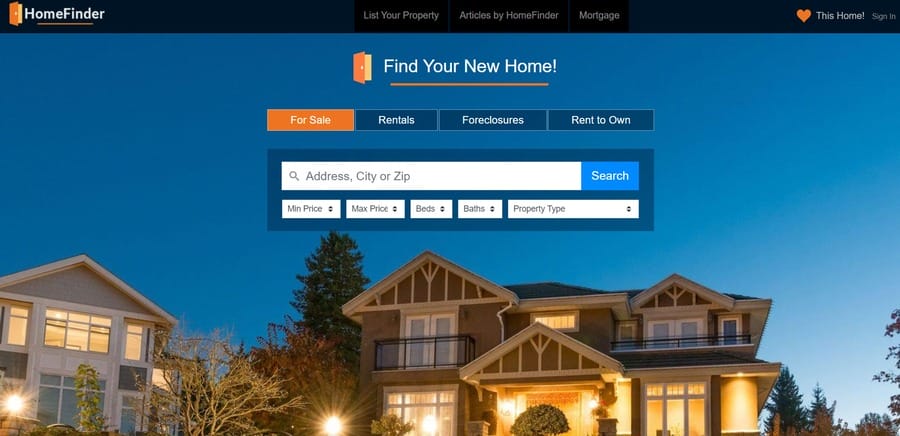
Home Finder’s logo is simple yet effective — featuring an open-door element next to the company name, symbolizing the agency’s role in helping clients find their dream homes.
The overall color scheme and brand typography point to a homely, warm and welcoming feel, fostering a sense of trust and reliability for potential clients.
Digital Silk’s Real Estate Branding Example
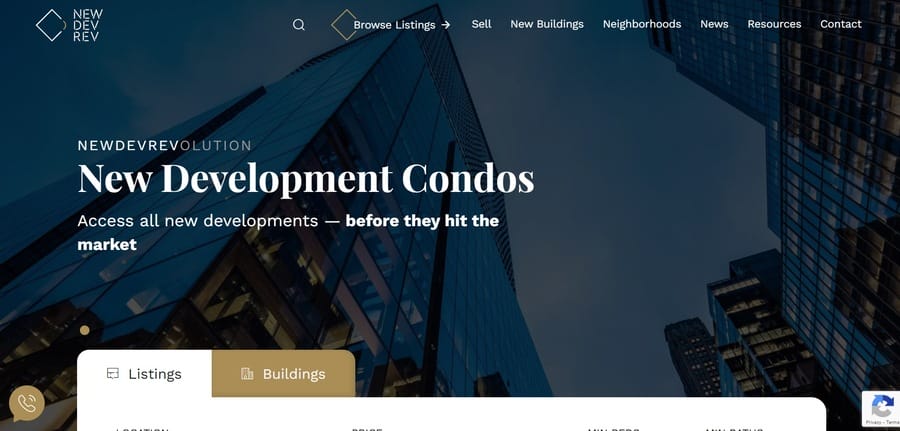
NewDevRev introduces innovative services — discovering new development properties in New York — to an already saturated real estate market.
Our challenge was getting their unique idea across clearly to stand out from the crowd of well-established brands.
We developed a strategic brand positioning framework, which included defining our target audience personas, crafting a unique value proposition and articulating clear mission, vision and promise statements.
Our team established a cohesive visual identity — logo usage, color palette, typography and imagery — to complement our foundational strategy.
This comprehensive approach solidified NewDevRev’s brand recognition across all platforms and communications and strengthened its market presence.
The Importance Of Branding In Real Estate
Real estate branding is more than just your signature logo or slogan — it’s a carefully mapped-out strategy that reflects your business values, mission, and unique selling proposition.
It’s a harmonized combination of visual and written media that represents the essence of your business and helps establish meaningful connections with your target audience.
But real estate branding is more than just establishing a generic presence — the goal is to create a unique and genuine identity that resonates with consumers and fosters long-term loyalty.
Your branding should reflect the signature values that your business offers to convince potential customers to choose your services over the competition.
While your offline image plays a big part in your brand positioning and overall identity, don’t underestimate the importance of your online reputation.
With 43% of buyers researching properties on the internet before making a purchase, a well-defined strategy can increase brand awareness, improve conversions, and foster a sense of credibility and trust.
Develop Your Real Estate Brand With Digital Silk
While following research-backed and brand-specific guidelines can inspire your trademark strategy, having expert guidance and support can optimize your marketing efforts and help you reach a wider audience.
At Digital Silk, our branding experts rely on meticulously curated guidelines, in-depth market research and careful audience segmentation to tailor our digital solutions to your niche and clientele.
Our comprehensive services include:
- Brand strategy
- Brand identity and design
- Naming and logo design
- Custom website design
Have a real estate branding project in mind?
Contact our team, call us at (800) 206-9413 or fill in the Request a Quote form below to schedule a consultation.
"*" indicates required fields






